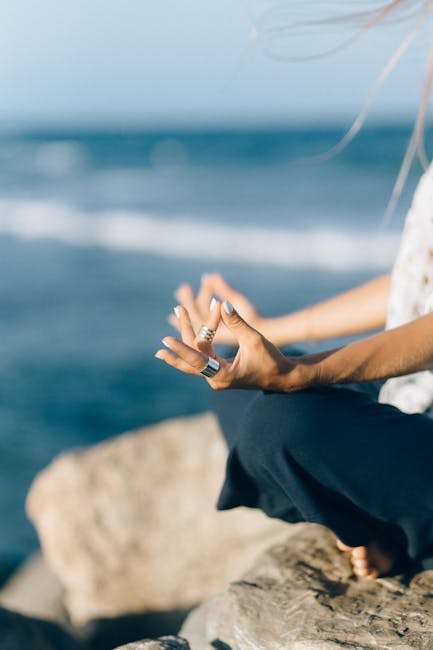Individuals recovering from substance use disorder (SUD) benefit from body-oriented therapy, including massage therapy. According to the National Center for Complementary and Integrative Health (NCCIH), “Massage therapy is used to help manage a health condition or enhance wellness.” Massage therapy “involves manipulating the soft tissues of the body.” Exclusive Hawaii Rehab™ offers massage therapy alongside evidence-based treatments to help clients heal and recover from SUD.
What Is Massage Therapy?
Massage therapy is a treatment that uses body stimulation to reduce stress, tension, and anxiety. A trained massage therapist kneads and rubs different areas of the body, relaxing muscles, tendons, and ligaments. The therapy is designed to relieve emotional and physical stress.
Using massage therapy in addiction recovery does the following:
Some people choose to combine multiple therapeutic approaches during massage sessions. According to Complementary Therapies in Clinical Practice, “When a therapy is added to massage therapy it sometimes has additive effects. For example, adding aroma to massage oils has been effective.” Exclusive Hawaii Rehab™ personalizes massage therapy to ensure it provides emotional and physical relief to clients in early recovery.
Popular Types of Massage
Various forms of massage have been used as a form of treatment for thousands of years in cultures all around the world. Many different methods of massage therapy are still used today. Some of the most popular forms of massage include:
People in recovery use massage therapy and other complementary treatments to release tension lingering in the body and improve focus. Massage can also help people heal from the lingering effects of substance abuse, increasing client comfort and engagement. Some positive effects of massage therapy may be cumulative and last for weeks or months.
Begin Your Journey Today

Massage for Recovery Relief
Recovering from substance abuse is physically and emotionally demanding. People benefit from using therapies that reduce physical stress and promote calm. Below are some of the massage therapy options offered at Exclusive Hawaii Rehab™.
Swedish Massage
During a Swedish massage, clients lay on a table or other surface, and the therapist uses long strokes and light-to-firm pressure to massage muscle groups. The stimulation reduces tension in the body. Swedish massage may include kneading, rubbing, tapping, and other movements to loosen ligaments, tendons, and muscles. The back and shoulders are the most commonly manipulated areas during Swedish massage.
Reflexology
Zone therapy, also called reflexology, involves massaging specific areas of the hands, feet, and ears to achieve relief in other areas of the body. Research is mixed, and there is no evidence reflexology has any specific effect when used as a treatment for substance abuse. However, many people reporting feel less stressed after participating in reflexology sessions.
Deep Tissue Massage
Some body aches are caused by tension in the deepest layers of the muscle. Deep tissue massage targets these areas. Clients lay on a table with the therapist using firm strokes to break up tension deep in the muscle tissue. The experience is similar to Swedish massage, except the pressure is harder to ensure it penetrates further into the muscle.
Your Path To Recovery Starts Today
How Does Massage Therapy Impact Recovery?
Massage therapy supports long-term recovery by addressing some of the physical and emotional aspects of healing from substance abuse. The hands-on treatment alleviates stress, anxiety, and the physical side effects of withdrawal. Many people find the recovery process more comfortable if they utilize complementary treatments, including massage therapy, to unwind between other treatments.
Massage therapy also increases self-awareness and encourages people to engage in self-care. A positive mind-body connection makes it easier for people to navigate various challenges in treatment and ongoing recovery. Massage therapy helps people feel more in tune with their emotions by facilitating a deeper understanding and acceptance of complex feelings or emotions.
Relaxation and Stress Reduction Lower the Risk of Relapse
Many people experience relapse during the first few months of recovery. Stress is one of the most common triggers for physical relapse. Massage therapy is an excellent way to reduce stress and improve physical health. The effects of massage therapy often last for a prolonged period and may continue to provide relief from some symptoms of SUD after treatment.
Massage therapy reduces the risk of relapse by doing the following:
People often build better recovery habits after engaging in self-care activities, including massage therapy.
Ready to Experience the Exclusive Difference?
Massage Therapy During Treatment and Aftercare
Many clients start using massage therapy during treatment to manage the symptoms and side effects of SUD. However, the benefits remain relevant after clients transition into continuing care and long-term recovery. Clinicians provide clients with referrals or information on local massage therapists to ensure they have the option to continue attending therapy sessions if they find it refreshing. Exclusive Hawaii Rehab™ encourages clients to use massage therapy and other healthy coping mechanisms after the transition out of structured treatment.
Experience True Healing
FAQ
We treat substance abuse involving:
- Alcohol
- Heroin
- Cocaine
- Methamphetamine
- Designer drugs
- Valium, Xanax, Ambien, Lunesta, and other depressants
- Percocet, Vicodin, Roxanol, and other prescription opioids
- Ritalin, Concerta, Dexedrine, Adderall, and other prescription stimulants
- Other addictive drugs